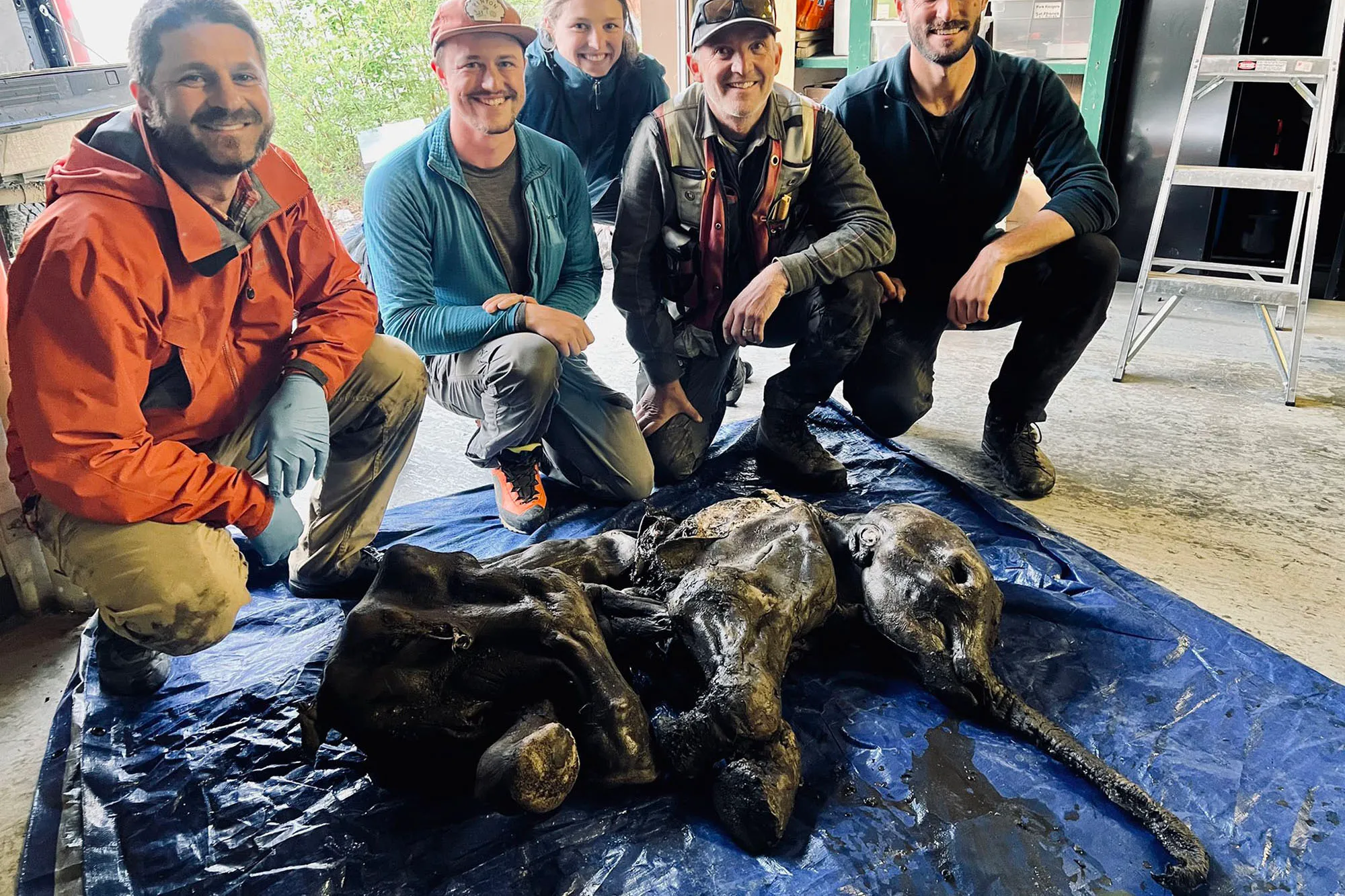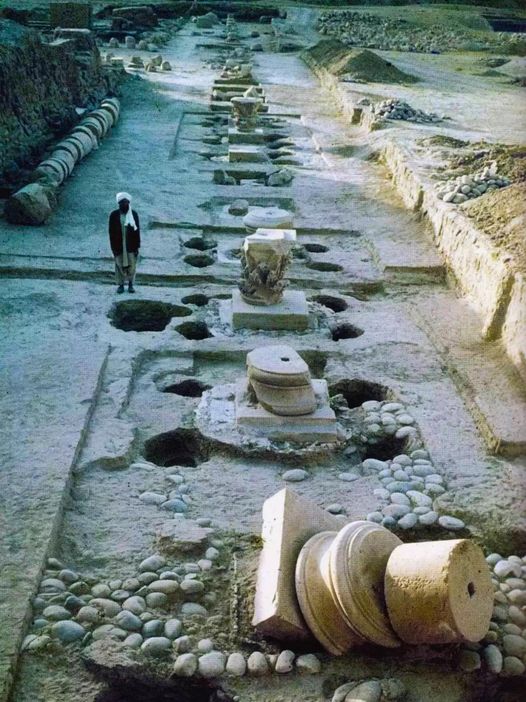Built in 600 BC, the fort is on top of a large hill which is 914m long. In the Iron Age, hundreds of people lived here
Introduction
Nestled in the verdant landscapes of Dorset, England, lies Maiden Castle, a testament to the ingenuity and strength of prehistoric Britons. As the largest hill fort in Britain and one of the largest in Europe, this ancient structure dates back to 600 BC, dominating the skyline with its impressive expanse and intricate defenses. Built atop a hill that stretches over 914 meters in length, Maiden Castle is not just a monument of ancient architecture but a silent witness to the lives of hundreds of people who once called it home during the Iron Age. This blog post delves into the history, structure, and significance of Maiden Castle, inviting readers to explore the legacy of one of Europe’s most remarkable ancient fortifications.
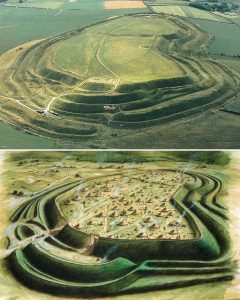
A Glimpse into Prehistoric Britain
The Architectural Marvel of Maiden Castle
The scale and complexity of Maiden Castle set it apart from other hill forts across Britain. Its construction began in the Neolithic period, with significant expansions in the Iron Age, transforming it into a formidable stronghold. The fort’s multiple ramparts, some reaching up to six meters in height, were designed not only for defense but also to display power and prestige. Inside, the layout reveals a well-planned settlement, complete with roundhouses, streets, and communal areas, indicating a highly organized society. The sheer size and design of Maiden Castle speak volumes about the resources and labor invested by its ancient inhabitants, underscoring their architectural prowess and social hierarchy.
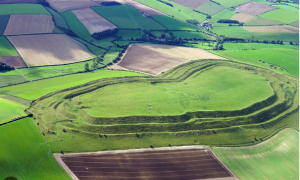
A Glimpse into Prehistoric Britain
Life Within the Fortified Walls
The daily life of the Iron Age inhabitants of Maiden Castle was intricately tied to the landscape and the fort’s strategic position. Archaeological excavations have unearthed evidence of a thriving community, with artifacts ranging from pottery and tools to jewelry and weapons. These findings suggest a society that was not only skilled in warfare but also engaged in agriculture, craftsmanship, and trade. The presence of granaries and storage pits within the fort indicates a level of planning and communal living that was advanced for its time. Maiden Castle was more than a military stronghold; it was a bustling center of life, trade, and culture, offering a unique insight into the Iron Age way of life.
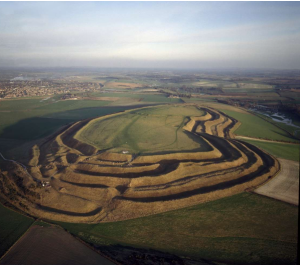
The Siege and Transformation of Maiden Castle
The history of Maiden Castle is marked by conflict and change, most notably during the Roman invasion of Britain in the 1st century AD. The fort’s formidable defenses were breached by the Roman legions, leading to a significant shift in the site’s use and importance. Following the Roman conquest, Maiden Castle saw a gradual decline in its status as a fortified settlement, with its inhabitants moving to new Roman towns and cities. The excavations have revealed signs of the siege, including Roman projectiles and evidence of fires, providing a stark reminder of the fort’s violent past and the transition from the prehistoric to the Roman era in Britain.
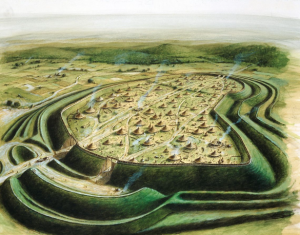
A Glimpse into Prehistoric Britain
Maiden Castle Today: Preserving Ancient Legacies
Today, Maiden Castle stands as a monument to Britain’s ancient past, attracting historians, archaeologists, and visitors fascinated by its history and scale. The efforts to preserve and study the site have shed light on the complexity of Iron Age societies and their architectural achievements. As one of the most extensively researched hill forts in Europe, Maiden Castle continues to contribute to our understanding of prehistoric life, offering a tangible link to a time when it stood as a center of power and community. The ongoing discoveries at Maiden Castle not only enrich our historical knowledge but also remind us of the enduring human desire to build, protect, and thrive.
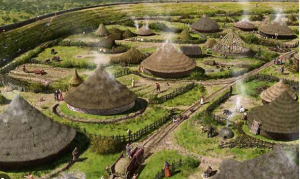
Conclusion
Maiden Castle is more than an ancient ruin; it is a symbol of prehistoric Britain’s architectural ambition, societal complexity, and resilience. As the largest hill fort in Britain, it offers an unparalleled glimpse into the Iron Age, from the everyday lives of its inhabitants to the dramatic upheavals that shaped its history. The fort’s sprawling ramparts and the remnants of its internal structures invite us to imagine the vibrant community that once thrived within its walls. In preserving and studying Maiden Castle, we keep the legacy of its ancient inhabitants alive, honoring their achievements and learning from their experiences. As we continue to uncover the secrets of Maiden Castle, we are reminded of the depth and richness of Britain’s prehistoric past.




